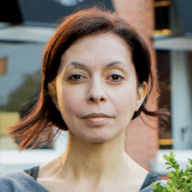Solidarity Is the Highest Form of Culture
The Flemish government has proposed severe cuts in arts funding over the next few years. Now, where have we heard that before? In the Netherlands, where, in 2011, the cultural sector was forced to make do with a budget cut of about 200 million euro. Hind Fraihi takes a closer look at the consequences of the Dutch cutbacks, which drove many artists to become self-employed. Apart from a few success stories, this led to instances of underpayment, and creative types becoming each other’s arch-nemeses. That is why she urges the vulnerable Flemish art scene to get organised ànd show some solidarity.
The cuts in the Flemish cultural budget that were announced by the government have been met with a lot of controversies. A wave of playful protests, opinion pieces, acts of solidarity posted on social media, selfies with the audience after various performances and a heated debate with a member of Parliament representing Vlaams Belang have thus far not proved very effective. There will be severe cuts in the arts and culture budget. Indeed, according to some, this foreshadows the rise of an authoritarian regime, book burnings and ‘shaming exhibitions’ about Entartete Kunst (degenerate art).
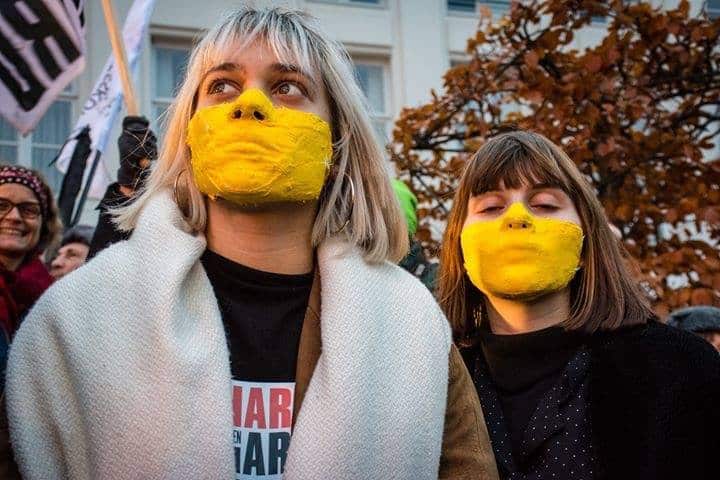 Protest against the Flemish cultural austerity measures
Protest against the Flemish cultural austerity measures© Geertje Franssen
Flemish author Ivo Victoria, who currently resides in the Netherlands, refused to ride that wave of moral outrage. In his opinion piece entitled Arts funding cuts? Stop whining and get on with it in De Morgen, he gave the Flemish cultural sector a piece of his mind. In this article, he referred to the infamous cutbacks of 2011, when the Dutch art sector had to hand over a staggering 200 million euro. Now eight years have passed, there is no sign of a cultural wasteland. Quite the contrary. He writes, ‘Young theatre groups have been springing up like mushrooms over the last few years. They prove themselves to be creative, ambitious and unstoppable. The industry as a whole has become more modern and increasingly entrepreneurial, it has tapped into private funding, at last, ‘marketing’ is no longer considered a bad word, and the former production companies focusing on talent development have regrouped.’
The reason being – and this is still according to Victoria – the growing support for cultural entrepreneurship. Whereas Flanders is an absolute nightmare when it comes to its ‘bureaucratic chaos’ and ‘downright criminal tax rates’, the Netherlands seems ‘a land of opportunities’ thanks to ‘startlingly simple administrative proceedings’ in combination with ‘numerous tax benefits’.
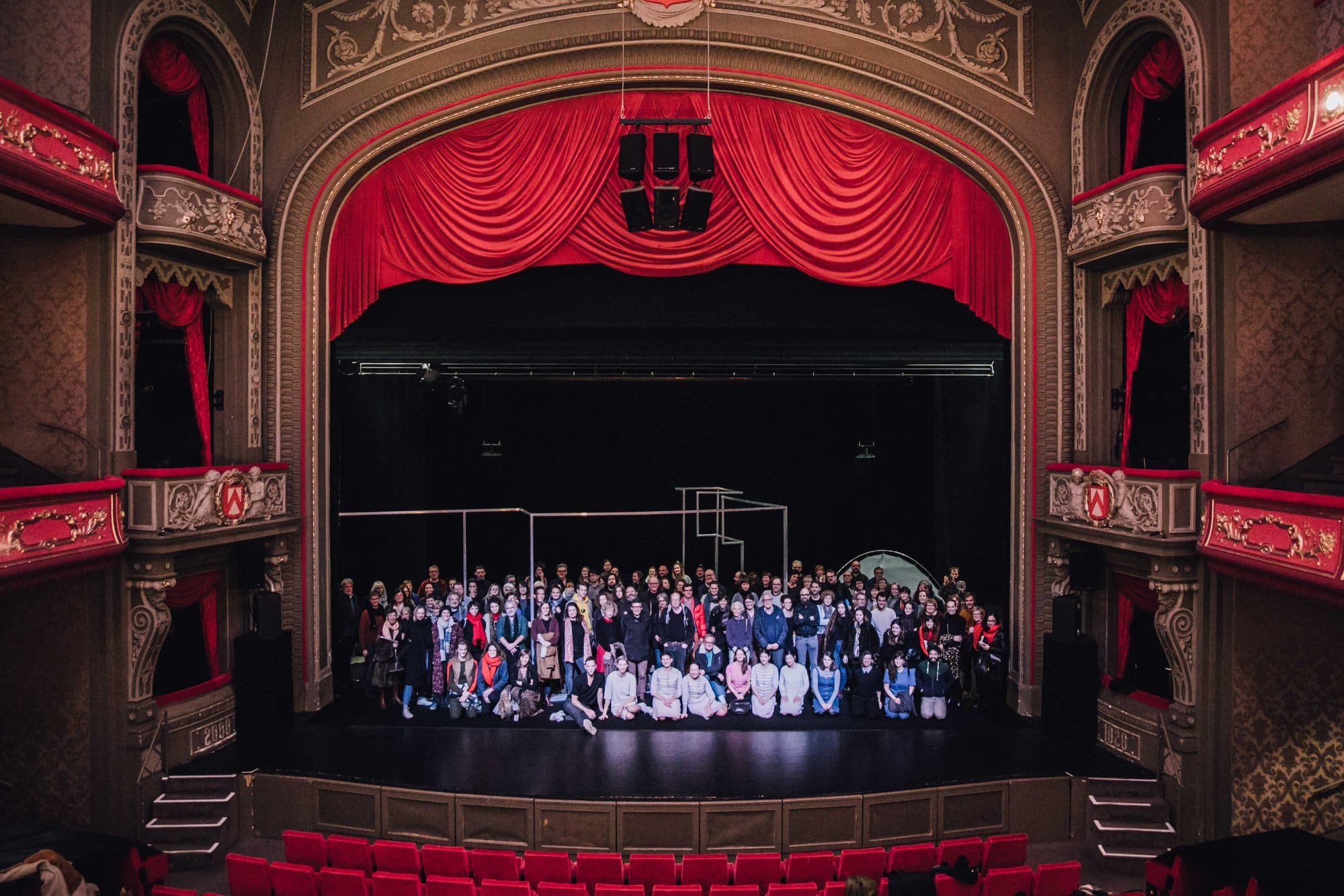 Audience takes the stage to protest against the Flemish cultural austerity measures
Audience takes the stage to protest against the Flemish cultural austerity measuresMarch of civilisation
So, has the Netherlands discovered a winning combination by coupling an enterprising spirit with artistic creativity? Or are, in fact, things a little more complicated? To find an answer to that question, we need to go back to 2011.
 Halbe Zijlstra
Halbe ZijlstraHalbe Zijlstra, State Secretary for Education, Culture and Science, has recently dropped a bombshell on the Netherlands’ cultural and art-loving scene. About 200 million euro in subsidies will be cut. The responses to the budget cuts are ruthless. There is the talk of ‘cultural vandalism’, a march of civilisation is organised against ‘Halve (or Half) Zoolstra’s’ mismanagement. Nevertheless, the State Secretary is sticking to his guns and severe cutbacks will be inevitable – the theatre and the fine arts, in particular, are facing a severe beating.
Halbe Zijlstra, a VVD politician of the dark blue persuasion, has quite a few opinions of his own when it comes to how the Dutch labour market should be run. He is a staunch supporter of flexible employment contracts and freelance workers. ‘Because people are working as self-employed professionals or freelancers (known in Dutch as zelfstandige zonder personeel, ZZP’er or self-employed professional without employees) they have a job, they earn an income. We will not take that from them. In our current rigid labour market, self-employed professionals are not the problem, they are the solution,’ is what he had to say on the matter.
Cue the revaluation of the self-employed professional. This is the Dutch equivalent of what is known as a ‘freelancer’, ‘sole proprietorship’ or ‘a self-employed person’ in Flanders. An independent entrepreneur who is paid for his services for various customers outside of permanent employment. Over 1.2 million Dutch people work under these conditions. They range from high-priced IT consultants to the Deliveroo boys and girls who bike around for just a couple of euros an hour. A fragile group too, seeing according to the Centraal Bureau voor de Statistiek (Central Bureau of Statistics, or CBS) about 10 per cent of them have a hard time making ends meet. The fact that self-employed professionals tend to work part-time, do not have work incapacity insurance and often cannot afford a pension plan, means they are at greater risk of poverty, according to the CBS.
The large majority of artists is struggling to pay the bills
Ever since ‘Zijlstra’s cutbacks’, the number of self-employed professionals in the cultural field has grown exponentially. In 2010, about 38,500 self-employed professionals had a job in the performing arts, fine arts, libraries, museums and heritage institutions. By 2017, their number had increased to over 59,000, which corresponds to 72 per cent of the entire workforce in the cultural sector.
And no, these stories do not all have a happy ending. Unfortunately, quite the opposite is true. Several artists, most often people who had gained some notoriety before 2011, can live off their earnings – at times quite well, actually. However, the large majority is struggling to pay the bills, or even finds it hard to pay for groceries. A study by the Stichting Economisch Onderzoek (SEO Amsterdam Economics) shows that half of the artists working as self-employed professionals earn a net income of 28 euro an hour or less. Nearly 33 per cent of them make even less than 15 euro an hour.
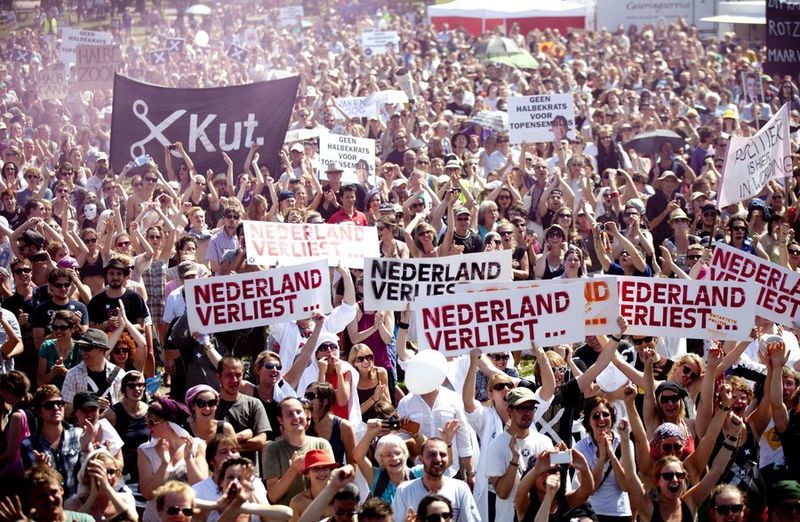 Protest in the Netherlands against Halbe Zijlstra's cultural policy in 2011
Protest in the Netherlands against Halbe Zijlstra's cultural policy in 2011The reason for this can be found in the age-old game of supply and demand. The cultural institutions’ shrinking budgets mean there is a lack of demand, whereas each year, a new generation of young, highly motivated idealists storms the free market of the creative arts. While the old(er) guard, who can barely make a living from their professions, refuses to explore other, far more lucrative sectors. Dutch art economist Pim van Klink claims all of this comes down to how artists perceive work. ‘Artists do not look upon an income as their incentive but are guided by the need to produce. Their desire to create is what drives them to work. This actually makes them very vulnerable, seeing they will keep at it, even if they are not making any money. This has resulted in a chronic labour surplus in the artistic domain, which, in turn, leads to a price drop. In different fields, insufficient remuneration would cause people to quit, but artists simply refuse to give up.’
As a consequence, artists and other creatives have become each other’s worst enemies. They are putting each other out of business by charging knockdown prices, or even by working for free. In the hopes that someday, in the end, someone will appreciate the true value of their talent, and reward them with cold hard cash. Many institutions, the media, and various companies are all too happy to take advantage of that mob mentality.
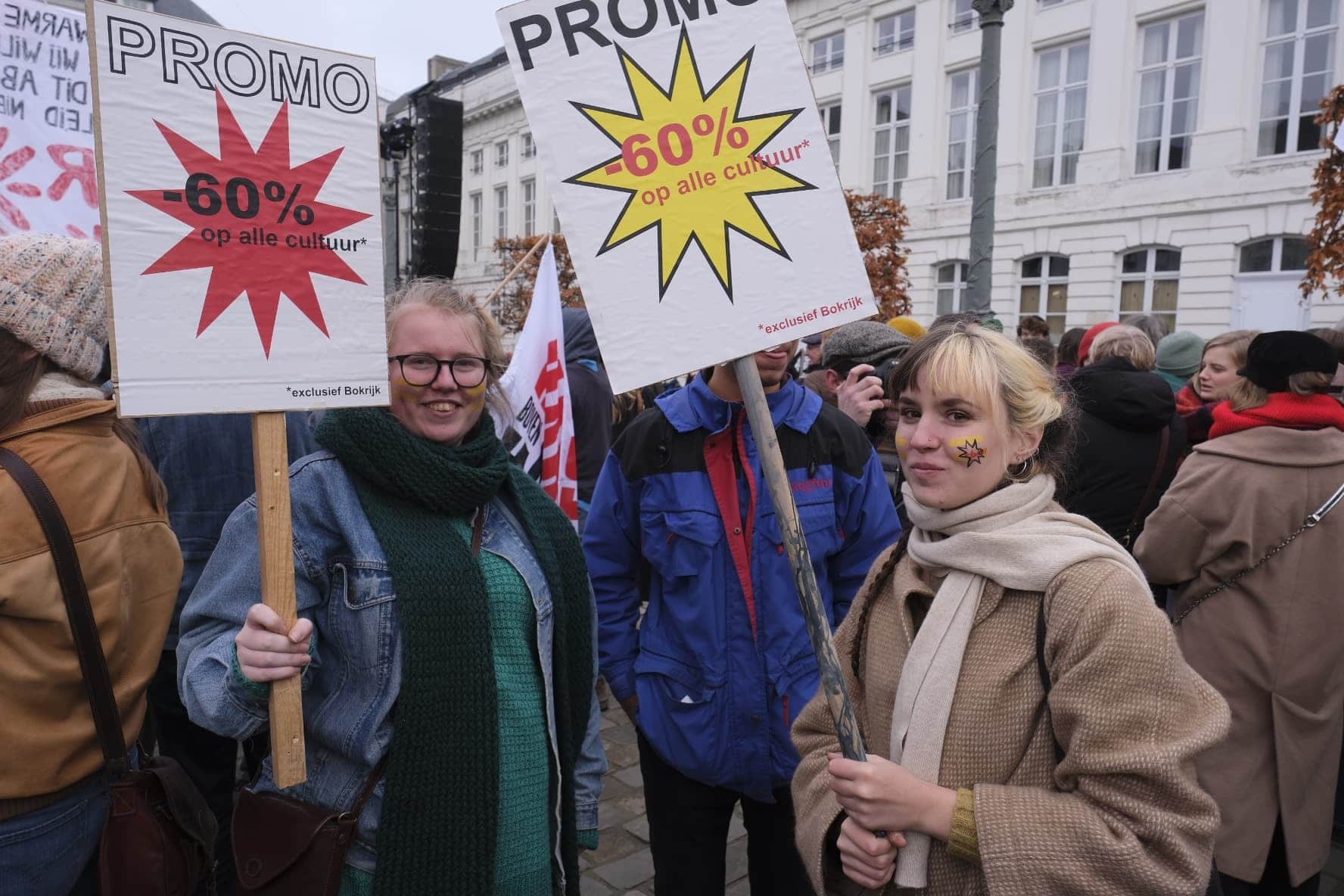
© Geertje Franssen
Those who take the time to browse through the subject matter will come across myriad stories that aptly illustrate this maddening race to the bottom. ‘Over the course of the past seven years, I, being a proud sole trader, have experienced many peculiar things, ranging from clients who would only pay me a mere 9 cents per word to editorial offices that would never even respond to my pitches. This might just be the “funniest” anecdote: getting asked whether I would want to write something for free for the purposes of “free exposure” and “resume building”’, columnist and self-employed professional Natascha van Weezel writes in Het Parool.
Fair practice
There is, however, something on the horizon. Last month, the Kunstenbond (union of artists and creatives in the Netherlands) sued the Nationale Opera & Ballet (Dutch National Opera & Ballet). The renowned art institution was charged with ostensible self-employment. The choir, for instance, was staffed with self-employed professionals who were required to work against much lower rates, i.e. a gross rate of 25 euro. That is even less than half of what permanent staff are paid, for the very same job. The current minister for Culture, Ingrid van Engelshoven (D66), has prepared a memo in which it is argued that subsidized art institutions should be obliged to pay fair wages. The cultural sector itself is extremely sceptical about these plans. ‘Most art institutions are saying: fair practice
is a good thing, but is not possible without additional funding,’ according to Kunstenbond FNV’s Caspar de Kiefte.
This way, the Dutch cultural domain is slowly but surely capsizing. The stage still appears impressive and dazzling, but the actors are dressed up in tinsel, faux fur and fake jewellery. Behind the scenes, it is all doom and gloom. There you will encounter un(der)paid unsuspecting innocents struggling to make a meal out of the left-over crumbs. To get to those crumbs, they are almost forced to fight their equally ill-fated peers. One day, the stench of impoverishment and scarcity will penetrate the heavy curtains and will waft into the box seats. When that day comes, the audience will no longer show up, for even Kafka knew: nobody leaves home for a hunger artist.
Union promoted solidarity among freelancers could be the first step
Chances are Flanders will face the same fate. A recent study by De Standaard tells us numerous larger cultural establishments will start to raise ticket prices and severely cut back on what is on offer because of the proposed cutbacks by Jambon’s government. Although it is stated that caution is required, we cannot rule out a confrontation. The buck will probably be passed to those at the bottom of the food chain, i.e. freelancers, those with temporary contracts and various other more vulnerable employees.
Could self-organization offer a solution? If artists were to unite and agree to no longer accept a fee below a certain amount, theoretically things should become fairer. Union promoted solidarity among freelancers and those working under temporary conditions could be the first step towards fireworks, towards Hashtag VuurWerk.
If not, that urge to connect will forever remain a mere pipedream; a sky lantern shooting up into empty space will not give off any sparks. Uniting freelancers in a union, with all of them working towards a common goal, in collaboration with their colleagues in permanent employment. Would that not snap, crackle and pop? VuurWerk, for solidarity is the highest form of culture.

